When diving into Diablo 4, remember that the game rewards both exploration and combat prowess. Keep an eye on your inventory, experiment with different builds, and enjoy the rich, dark atmosphere of Sanctuary. Here is a Diablo 4 Basics Guide to help get you started:
Game Overview
•Genre: Action RPG (ARPG) with an isometric viewpoint.
•Setting: The dark fantasy world of Sanctuary, where you battle against demonic forces.
•Objective: Slay enemies, complete quests, and defeat bosses to progress through the story, with an emphasis on loot collection and character development.
Character Creation and Classes
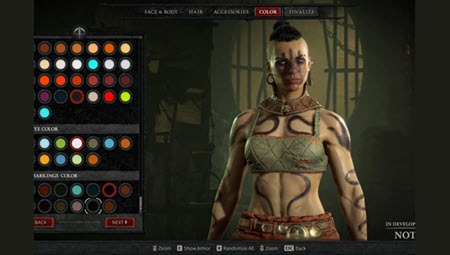
Game Basics for Diablo 4: Character Creation and Classes, Image via: Blizzard Entertainment
Classes:
•Barbarian: Melee-focused, known for raw power and fury.
•Sorcerer: Masters of elemental magic, focusing on ranged spellcasting.
•Rogue: Versatile with abilities in both melee and ranged combat, plus traps and evasion.
•Druid: Can shapeshift between human, bear, and wolf forms, focusing on nature magic and tanking.
•Necromancer: Summons undead minions and manipulates life and death.
Customization:
•Choose your class based on playstyle, then customize appearance. Classes unlock unique skills as they level up.
Core Gameplay Mechanics
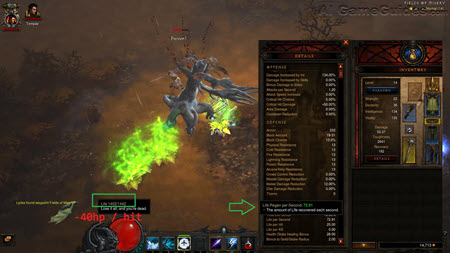
Game Basics for Diablo 4: Core Gameplay Mechanics, Image via: Blizzard Entertainment
•Skill Tree: Each class has a unique skill tree where you allocate points as you level up. Skills can be upgraded, and there's a respec option for changing your build.
Combat:
•Active Skills: Mapped to hotkeys or controller buttons, these are your primary means of attack and defense.
•Resource Management: Each class uses a unique resource (e.g., Fury for Barbarian, Mana for Sorcerer) for their abilities.
•Basic vs. Advanced Skills: Basic skills are used to generate resources, while advanced skills consume them.
•Leveling: Gain experience by killing enemies, completing quests, and participating in events. Leveling up grants skill points and attribute boosts.
Inventory:
•Loot: Items drop from enemies, with quality ranging from common to legendary. Gear can have affixes that provide bonuses.
•Stash: A shared space for storing items across characters.
Exploration and World Design
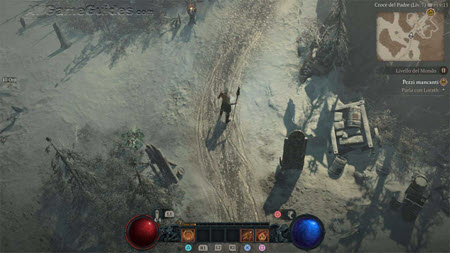
Game Basics for Diablo 4: Exploration and World Design, Image via: Blizzard Entertainment
•Open World: Explore different regions, each with its own storyline, side quests, events, and dungeons.
•World Tier: Adjusts game difficulty, providing better loot and experience at higher tiers.
•Waypoints: Activate to fast travel around Sanctuary.
•Events: Random world events where players can join to gain rewards.
•Dungeons: Procedural or fixed layouts offering unique challenges and aspects for gear enhancement.
Character Progression
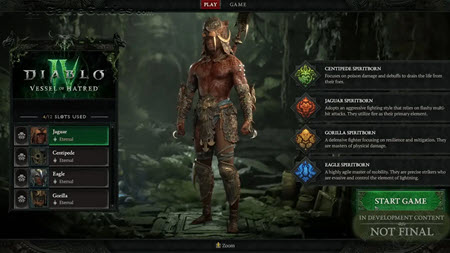
Game Basics for Diablo 4: Character Progression, Image via: Blizzard Entertainment
•Paragon System: After reaching level 50, characters can progress through the Paragon Board, enhancing stats and unlocking powerful nodes.
•Aspects: Legendary abilities that can be extracted from gear and imprinted onto other items.
Multiplayer
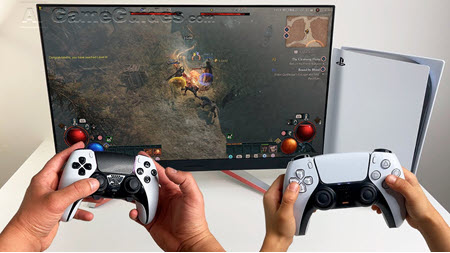
Game Basics for Diablo 4: Multiplayer, Image via: Open Surprise
•Co-op Play: Team up with friends or randomly match with other players for cooperative gameplay.
•Party Experience: XP gain is shared, but loot is individual.
•PvP: Fields of Hatred zones where players can fight each other for shards, which can be redeemed for unique rewards.
Endgame Content
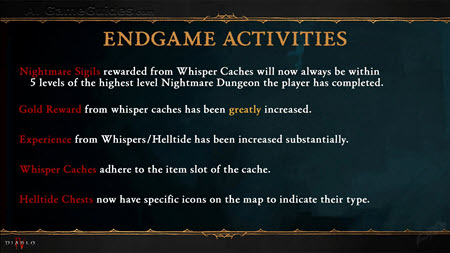
Game Basics for Diablo 4: Endgame Content, Image via: Blizzard Entertainment
•Nightmare Dungeons: Higher difficulty versions of dungeons with unique modifiers.
•World Bosses: Large-scale events where players fight against powerful bosses for rare loot.
•Seasonal Content: New seasonal mechanics, story, and challenges that reset with each season.
Economics
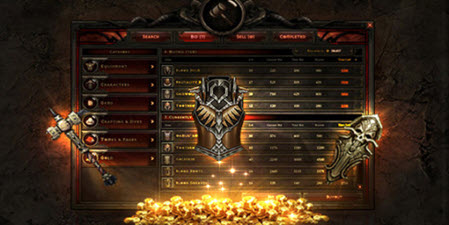
Game Basics for Diablo 4: Economics, Image via: Blizzard Entertainment
•Gold: The primary currency for buying, selling, and trading items.
•Obols: Secondary currency used for gambling at the Purveyor of Curiosities for gear.
Tips for Beginners 
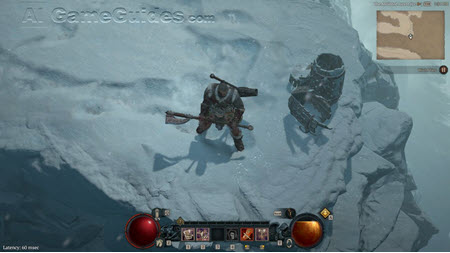
Game Basics for Diablo 4: Tips for Beginners, Image via: Blizzard Entertainment
•Start on World Tier 1: Get familiar with mechanics before increasing difficulty for better rewards.
•Experiment with Skills: Don't be afraid to respec; find what feels fun and effective.
•Salvage Gear: Instead of selling, salvage items to gain materials for crafting and upgrading.
•Engage in Side Content: Side quests, dungeons, and events are great for leveling and loot.
•Use Your Mount: Once obtained, use it to travel faster across the expansive world.
Resources

Game Basics for Diablo 4: Resources, Image via: Blizzard Entertainment
•Interactive Map: Use community-created maps or in-game features to track collectibles like Altars of Lilith, which permanently boost stats.
•Guides: For detailed class builds, quest walkthroughs, or loot tables, consult resources like IGN, GameSpot, or community forums.
You may also like:
•The Story Behind Diablo 4 (IV)
•Editions and DLC Guide for Diablo 4
•System Requirements Guide for Diablo 4
•PvE Operations Guide for Diablo 4
•Basic Walkthrough to Diablo 4
•Top 10 Tips & Tricks for playing Diablo 4
